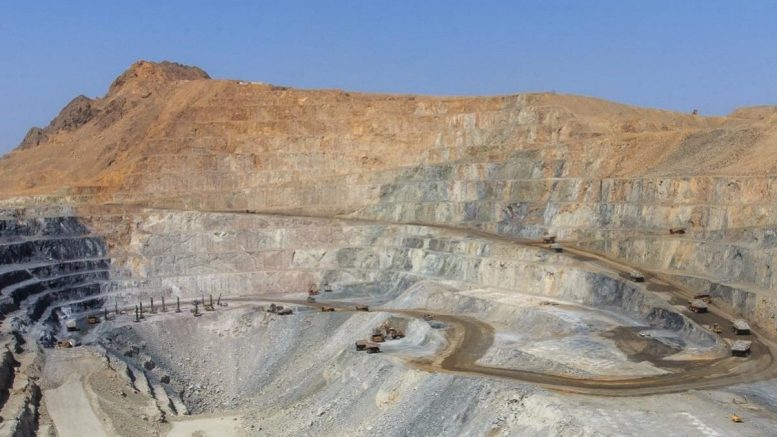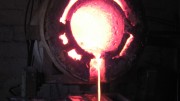With so many troubles in Africa’s centres of gold mining — extremist attacks in West and North Africa, perennial challenges in Central Africa and the long, slow decline of violence-ridden South Africa — it can be easy to lose sight that, at least from a technical perspective, gold mining is still a strong and productive sector on the continent.
While global mine production increased in 2016 by 35 tonnes to 3,255 tonnes (104.7 million oz.) according to Metals Focus Ltd. and by 14 tonnes to 3,222 tonnes (103.6 million oz.) according to GFMS — both figures being the seventh consecutive, all-time highs, in contrast to earlier predictions of a slight decline — Africa stands out as one of the top-performing regions of the world for gold mine production.
According to Metals Focus, Africa hosts five countries among the world’s top gold-producing countries, which are led by the top five of China, Australia, Russia, the U.S. and Peru, which together produced 1,417.1 tonnes (45.6 million oz.) in 2016, or 44% of the global total.
But further down the top-20 list for 2016 gold production are the African countries that are consistently strong performers, all with increasing output versus 2015: South Africa in sixth spot with 165.6 tonnes (5.3 million oz.) and a slight increase from 2015; Ghana in 11th spot with 95.6 tonnes (30.7 million oz.) and a bit of a rise from 2015; Tanzania taking the 15th slot with 55.3 tonnes (17.8 million oz.) and a 4% jump from 2015; Mali in 18th place at 50.1 tonnes (16.1 million oz.) and a 2% rise from the previous year; and Burkina Faso sliding in at 19 with 41.6 tonnes (13.4 million oz.) for a whopping 8% rise year over year — the best increase amongst all countries in the top 20.
This increase in annual gold output for the five leading African nations contrasts with others in the top 20 that saw substantial year-over-year declines, especially Indonesia, -4%, and in Latin America: Argentina, -7%; Chile, -4%; Peru, -3%; and Mexico, -2%.
GFMS has quite a different list of top-20 gold mining countries, with only four African countries making the cut: South Africa (8th), Ghana (10th), Mali (15th) and Tanzania (18th).
Precious Metals Ltd. found that total African mine supply grew in 2016 by 16 tonnes (514,000 oz.), which is the largest of any region globally, as new mines in West Africa added 10 tonnes (322,000 oz.) to the mix. The consultancy says that “combined with material gains at a handful of large existing mines on the continent, this offsets ongoing losses at a number of older operations.”
It notes that Africa’s largest percent gainer for gold production in 2016 was Egypt, as Centamin’s Sukari mine boosted output by 26% to a record 17 tonnes (547,000 oz.), due to higher tonnages from the open pits and higher grades from the pits and underground.
Burkina Faso also stood out with a gain of 3 tonnes (96,000 oz.), with the start-up of Roxgold’s Yaramoko and Endeavour Mining’s Karma gold mines, which added 4 tonnes.
Other highlights for Metals Focus were Tanzania’s 4% increase due to a 3-tonne gain at Acacia Mining’s North Mara mine, where grades “improved 25% as richer ore was processed from the new Gokona underground mine,” as well as Eritrea’s increased stature as Zara Mining Share Co.’s Zara gold mine hit commercial production in January 2016, doubling the country’s gold output.
South Africa, Mali and Ghana all saw material gains from new and improved gold operations almost completely offset by losses from more established operations in 2016.
The biggest production losses in Africa on a percentage basis were seen in Mauritania (-19%) due to a 20% drop in output from Kinross Gold’s Tasiast mine and in the Democratic Republic of the Congo (-3%), as Randgold Resources’ Kibali mine had a platform stability issue in early 2016.
Also of note, in 2016, the second-largest gold mine start-up in the world was Asanko Gold’s Asanko mine (formerly the Obotan and Esaase projects) in Ghana at 6 tonnes (193,000 oz.), following only Torex Gold’s Morelos in Mexico at 9 tonnes (289,000 ounces).
One area where Africa lags most of the world is in gold production costs. While the world average according to Metals Focus Ltd. was total cash costs of US$634 per oz. and all-in sustaining costs (AISCs) of US$852 per oz., Africa had total cash costs of US$739 per oz. and AISCs of US$937 per oz. — second only to the highest-cost region of Europe. On the positive side, Africa saw its costs decline 3.5% in 2016, in line with the world average.




Be the first to comment on "Editorial: Africa remains a dominant force in global gold mining"